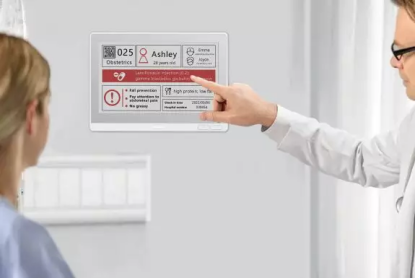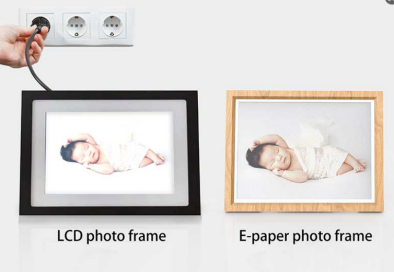What is Electronic Paper?
Electronic paper, also known as electronic ink, is a technology that imitates the appearance of traditional ink on paper. It works by arranging millions of tiny capsules in a thin film. Each tiny capsule is filled with a clear fluid that contains charged pigment particles. When an electric field is applied, the pigment particles move within the capsules (i.e., electrophoresis), causing the e-ink paper to display a specific image. This image remains static until another electric field is applied

Structural and Process Flow Chart
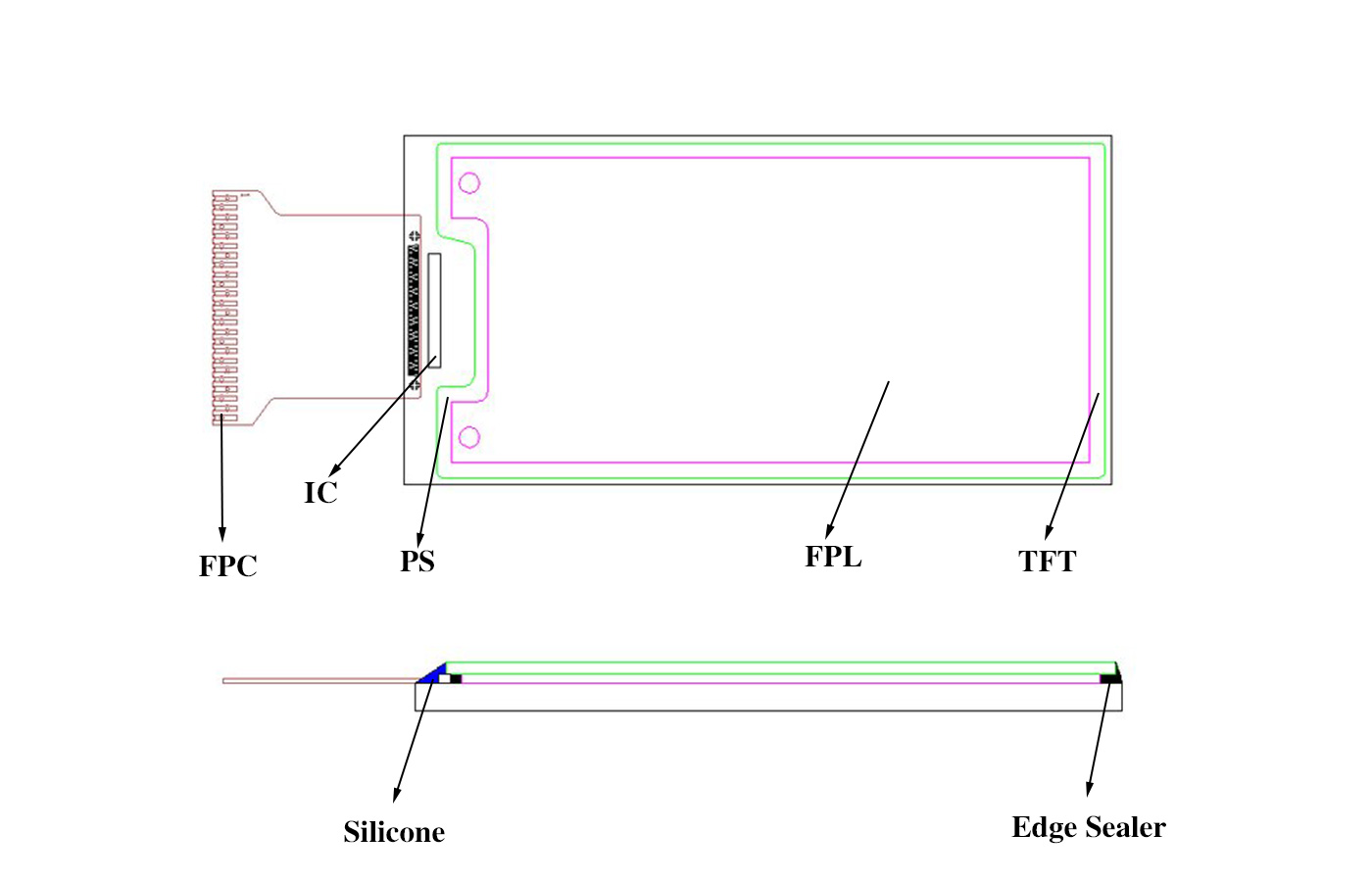
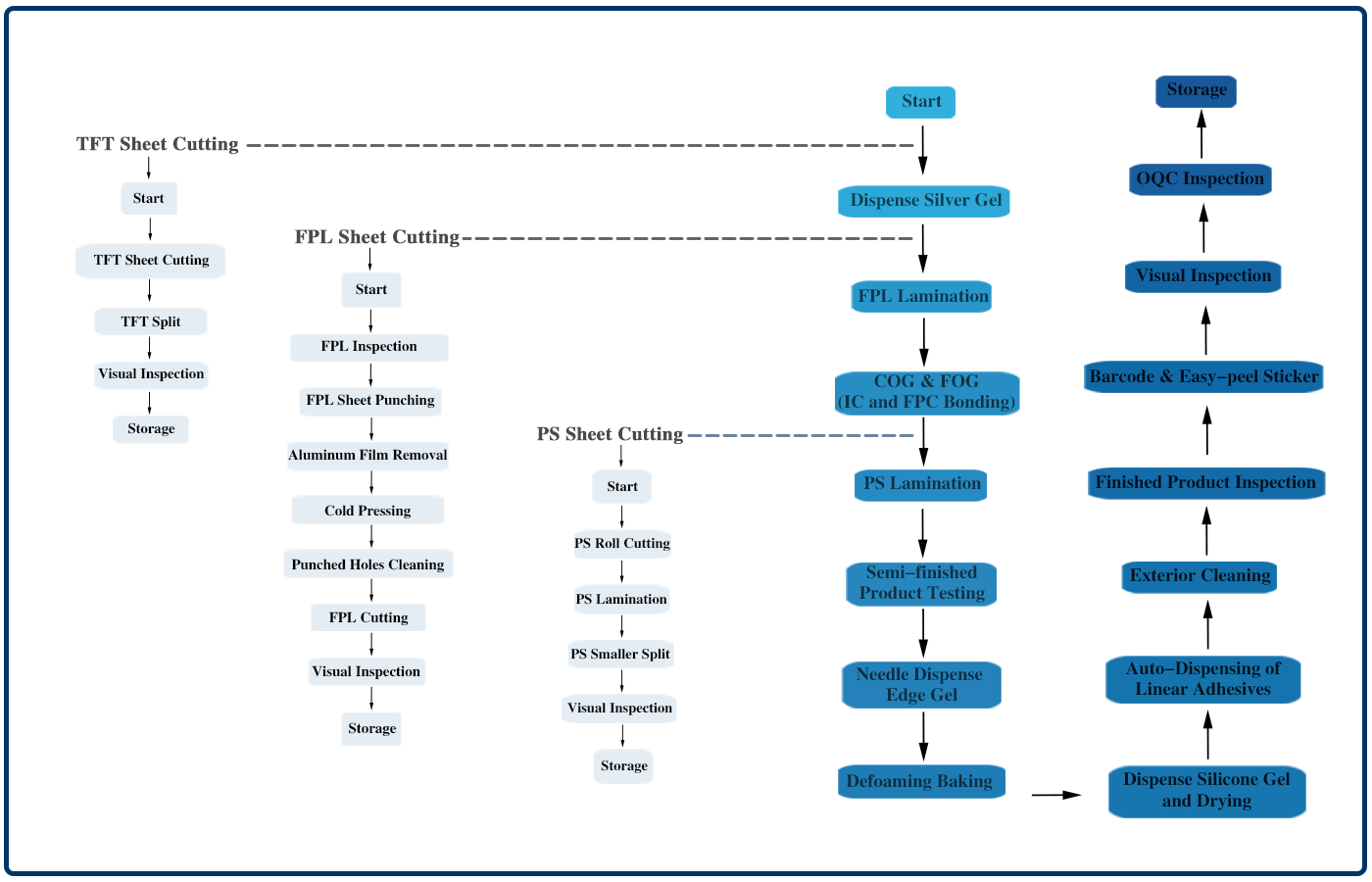
E Ink Technology Roadmap
Different roadmaps, unique advantages! SEEKINK delivers the best e-ink solutions tailored to each application, empowering the growth of a low-carbon society.
Key Characteristics of Electronic Paper
Electronic paper has two main characteristics that set them apart from other displays:
Paper-like Display
E ink display technology provides a paper-like reading experience by reflecting ambient light rather than emitting it. The E paper technology helps reduce eye fatigue. It also enables a wide viewing angle and high readability under sunlight.
Bi-stable Display
Electronic paper is bi-stable, meaning the E ink display technology doesn’t require continuous power to maintain an image. The E ink tech results in great energy savings. It also contributes to the shared goal of reducing carbon emissions.
Essential Technical Support in Whole ePaper Display Solutions
Mainboard Solution Support
The mainboard of electronic paper should be tailored to actual usage scenarios. For example, embedded systems are typically preferred for single-function uses, while Android systems are more suitable for scenarios that demand multitasking.
Operating Software Support
The operating software of electronic paper refers to the specialized software used to publish, manage, and update display content. It should support features such as remote content updates, content scheduling and management, multi-device synchronization, etc.
Multi-size Models Support
Suppliers should provide differently-sized electronic paper models for diverse usage scenarios, including electronic notebooks, billboards, transportation signage, and more.
TFT Resource Support
TFT primarily controls the charge distribution of each pixel point on the E-paper screen to achieve image refresh. Access to low-cost TFT resources makes electronic paper displays more affordable and accessible.
Color and Wide Temperature Range Support
Electronic paper displays should be capable of displaying colors beyond black and white and functioning reliably across a broad range of temperatures to meet diverse customer needs.
Narrow Bezel Support
Narrow bezel designs aim to decrease the overall screen size for space savings and enhance aesthetics. It also facilitates modularity, making it easier to piece together multiple screens for advertising walls or large displays.
High Refresh Rate Support
High refresh rate support ensures the capability for rapid screen refresh, which is crucial for accommodating the display needs of dynamic content.
Multiple Interfaces Support
Electronic paper solutions should support various interfaces, such as SPI, I²C, UART, and USB. Broad compatibility ensures seamless integration with different hardware devices.
SEEKINK E Paper Usage Scenarios
Pain Points of Traditional Display
LCD
- Higher operating cost led by high power consumption
- Demand for a stable power supply
- Complex installation increases labor cost
- Glare under strong light, Poor readability
- Limited upgrade options
Paper
- Not eco-friendly, waste resources
- Delayed content updating
- High maintenance difficulty and labor cost
- Poor durability, prone to fading and decay when damp
- Low-visibility at night
Advantages of ePaper Solutions
- Ultra-low power consumption, energy-saving and eco-friendly
- Easy to install without electricity
- 178° wide viewing angle for high readability
- No glare under strong light, visually comfortable
- Digital management with centralized backend operation
- Waterproof and explosion-proof (IP65 & IK08)
- Excellent visual performance at night (with front-light function)
- Excellent visual performance at night (with front-light function)
Pain Points of Traditional Display
LCD
- Higher power consumption, more electricity cost
- Power-relied display & limited mobility
- Poor visibility and glare under strong light reflection
- Complex installation and high labor cost
Paper
- Labor-intensive and repetitive posting
- Waste of paper, not environmentally friendly
- Poor durability, prone to fading and decay when damp
- Delay when updating Content
Advantages of ePaper Solutions
- Energy-saving and eco-friendly
- Reduce human work by rapid and remote content updates
- Clear and eye-friendly display under strong light
- No need on electrical wiring
- Portable and flexible placement
- Stylish & upscale, enhancing commercial value
- Alternative outdoor solutions
Pain Points of Traditional Display
LCD
- High power consumption and electricity cost
- Plug and play, limited mobility
- Glare under strong light, poor visibility
- Complex installation, High labor cost
Paper
- Manual replacement with labor cost
- Waste of paper, not eco-friendly
- Poor durability, cannot be reused
- Delayed content updating
- Only display basic information
- No centralized management
Advantages of ePaper Solutions
- Energy-saving, display without any power
- Display rich information
- Remote content updating
- 178° wide viewing angle offering high readability
- Eye-friendly with no glare under strong light
- Easy installation and flexible mobility
- Digital workplace with centralized backend management and updating
Pain Points of Traditional Display
LCD
- Light pollution, affecting patient rest
- Higher power consumption, more electricity cost
- Plug and play, limited mobility
- Glare under strong light, poor readability
- Complex and costly installation
Paper
- Manual replacement with labor cost
- Not sustainable, excessive paper waste
- Delayed content updating
- Only displaying contents with basic information
- No centralized management
- Poor display caused by waterproofed failure and liquor
Advantages of ePaper Solutions
- Paper-like display with zero light pollution
- Waterproof and dustproof for reliable display
- Energy-efficient, with zero power consumption to maintain displays
- Remote content updating
- 178° wide viewing angle for high readability
- No glare under strong light, visually comfortable
- Easy to install and move
- Digital hospital with centralized backend management and updating
Pain Points of Traditional Display
LCD
- Inartistic and cluttered wires with plug-in power
- High power consumption and electricity cost
- Glare under bright light & uncomfortable visual experience
- Cumbersome installation and reposition
- Lacking authenticity led by overly digitalization
Paper
- Waste of paper, not eco-friendly
- Low durability, easy fading and decay when damp
- Repetetive paper replacement by hand
Advantages of ePaper Solutions
- Wire-free and tiny, designed with modern aesthetics
- No glare in bright light for visual comfort
- Ultra-low power consumption, Static image displaying with zero energy
- Easy to install and move
- Instant content updates anywhere and anytime
- Optional front light offering nighttime readability
- Paper-like displays evoking retro feelings to preserve precious memories
SEEKINK Transmission Method
TAG Series
1) Bluetooth/Wi-Fi Communication: Tags connect to the e-paper tag management platform via Bluetooth base stations or Wi-Fi, enabling device management and image udpating.
2) NFC Communication: The phone case App communicates with tags using the smartphone’s NFC capability to manage tags and update images.
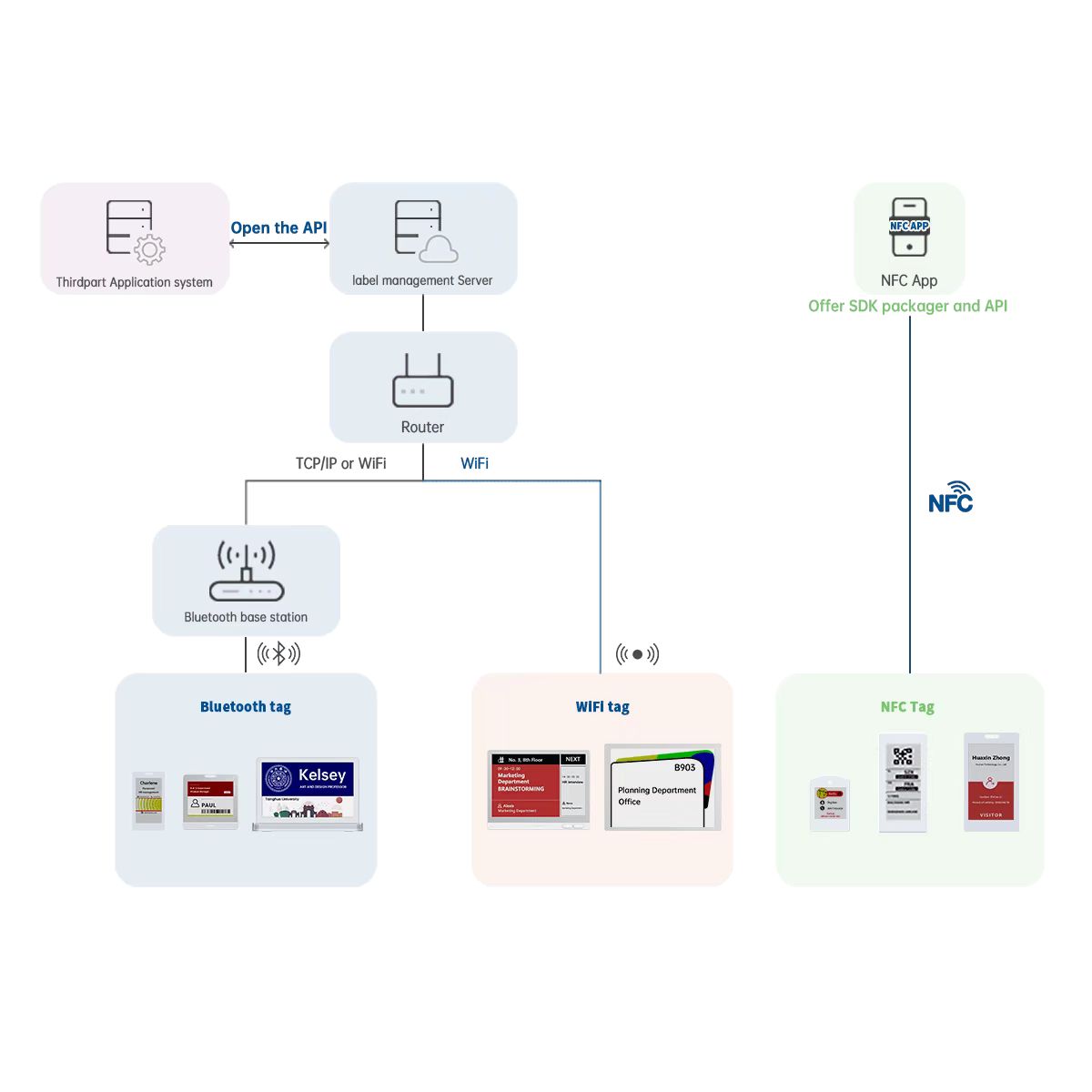
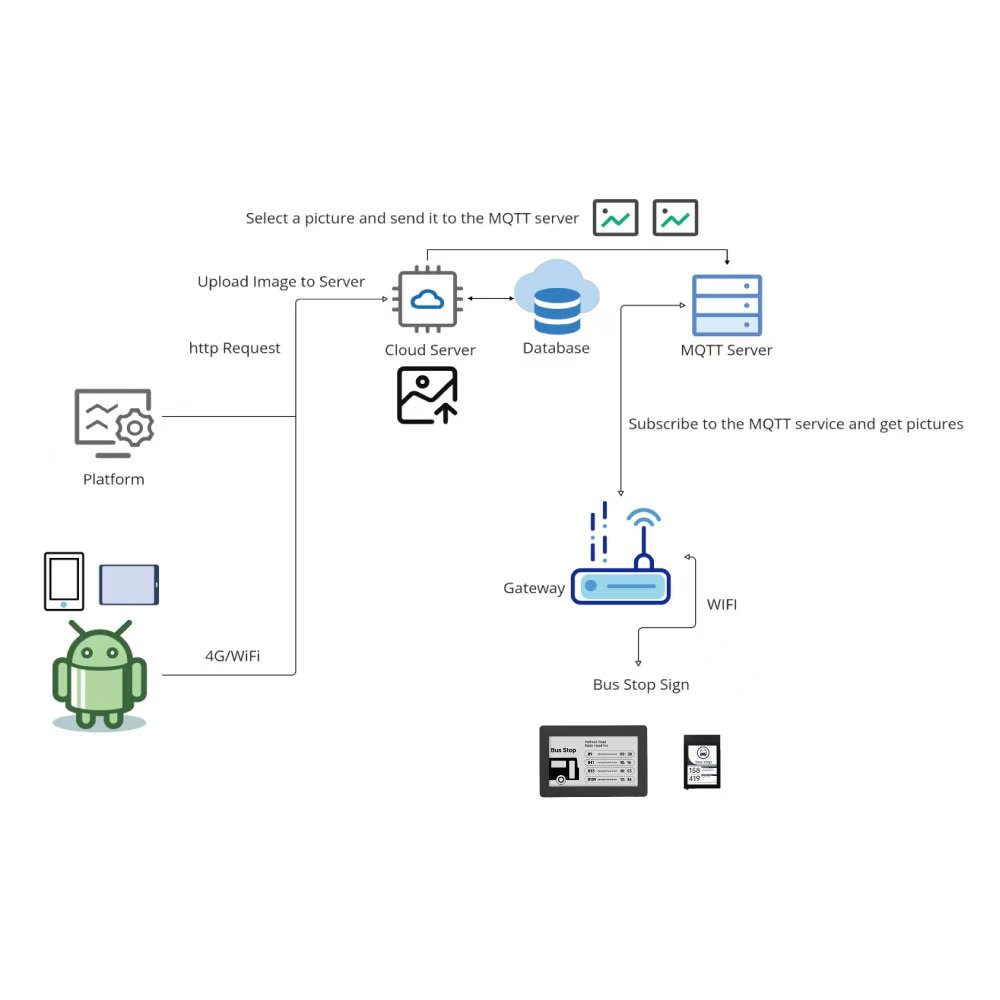
SHINE Series
When the terminal device (a phone or cloud platform) sends an image-update request, the image will be uploaded to the cloud server firstly. And then, the cloud server will publish the image via MQTT to the e-paper device controller (Android or Linux). This controller transfers the image data to the T-CON board through a USB connection. Finally, the T-CON board will drive the E Ink screen to display the image.







